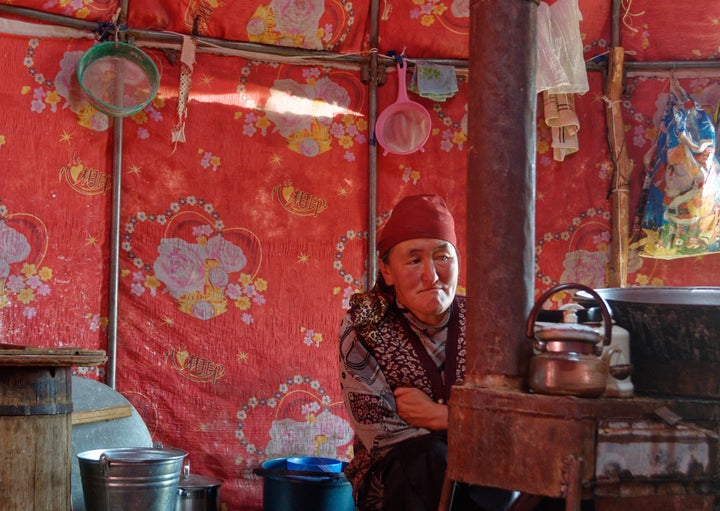
NARYN REGION, Kyrgyzstan — Thinking back on the early days of her youth near the village of Cholpon, Bukeshova Urmatgul Kachkynovna remembers a double-humped camel. Her parents would load the unruly animal with yurts and supplies each spring before leading their livestock on a trek up toward glacial pastures, plush with grass for grazing.
Like generations of sheep, horse and cattle herders, Kachkynovna, now 47, and her family marked the seasons with the rhythms of migration. Until, one day, those trips into the mountains stopped.
The end of this nomadic lifestyle brought with it serious environmental consequences, problems that the community is now trying to unpick.
All Kyrgyz tribes used to own and herd their livestock. Families measured their year by fall, winter, spring and summer grazing pastures, living in yurts year round. But under Soviet rule, traditional herding lifestyles were largely replaced by industrialized farming practices. Nomadism in Kyrgyzstan, a mountainous Central Asian country that borders China, all but disappeared.
Soviet authorities had their own pasture rotation system and kept a tight watch over the state herders, such as Kachkynovna’s family, who were sent into the high pastures each summer.
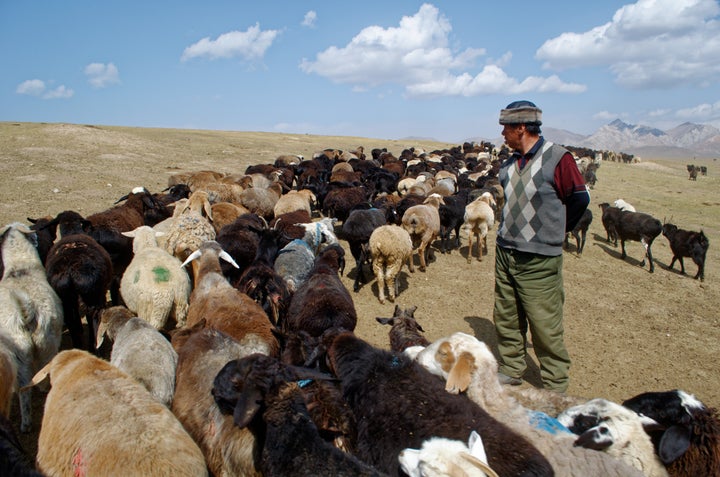
But after the breakup of the USSR in 1991, Soviet-run collective farms were dissolved, and arable land, along with livestock, became privatized. Desperate to earn a living, flock owners like Kachkynovna’s family left the mountains in favor of thronged village pastures (normally used only in winter), where they had ready buyers for their goods.
The “Land of Nomads,” as Kyrgyzstan is often called in travel blogs, stopped moving. And it had an impact.
Reliance on the same overused grasslands has been disastrous for the landlocked country’s sensitive ecology. In the quarter-century since independence, overgrazing and land degradation have amplified the effects of a swiftly changing climate.
Warming temperatures, worsened by regional desertification, have resulted in the disappearance of almost a third of the glaciers in Central Asia. Hillsides stripped of vegetation destabilize the ground. Last year, 24 people died in a landslide in a village in the south of the country. Spurred by heavy rains, deadly mudslides now herald the coming of spring as much as the blue skies and blossoming valleys.
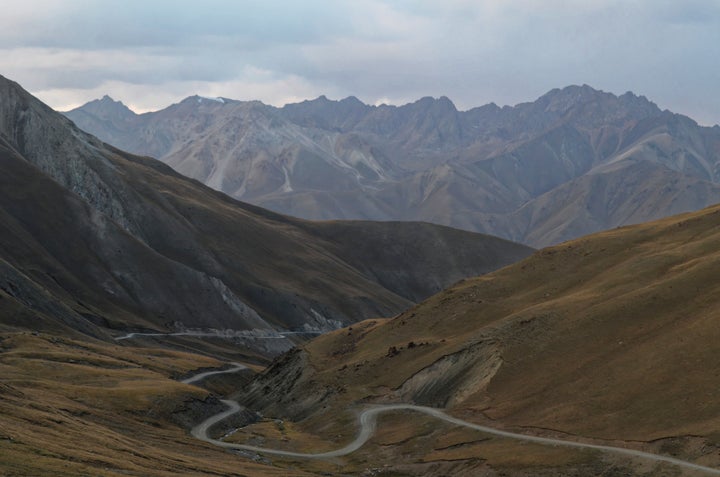
But a pilot project organized by Kyrgyz Jayite, a community-based pasture association in Naryn, home to a third of the country’s pastures, aims to regrow the country’s barren grasslands by rekindling Kyrgyzstan’s faded nomadic traditions.
This summer, herders were persuaded to leave behind the sunny, low-lying villages of Kyzart and Cholpon, in the center of the country and north of the Tian Shan range, and spend five months in the remote unpopulated pastures surrounding Song Kol, an alpine lake that stands at almost 10,000 feet — and lies a tough three-day trek away by horseback.
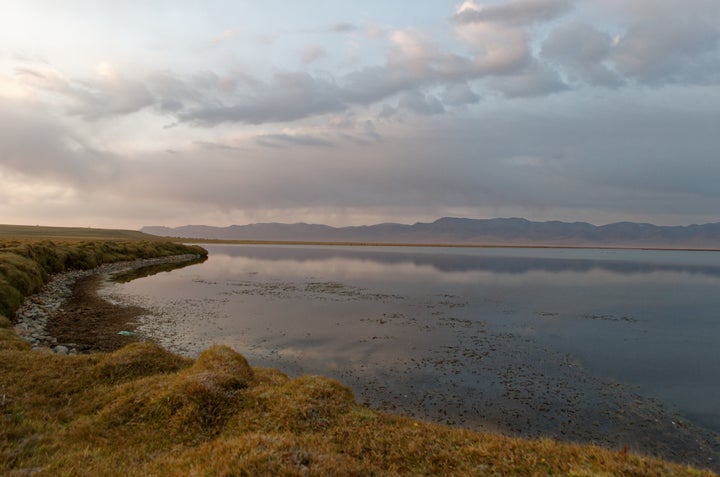
“It’s better for the animals here in Song Kol. There’s a lot of grass,” said Kachkynovna, who was one of about 300 people to make the trip in May. Sitting inside a bright, red-patterned yurt, she churned cream to feed the taigan puppies — a breed of Kyrgyz hunting hound — that romped outside the woolen door flap. “If they’re OK, then we’re OK.”
Once a Silk Road trading route, the northern Tian Shan — mountains nicknamed the water tower of Central Asia for their crucial reserves — is a biodiversity hotspot. Glacial runoff from the snow-capped, high-altitude range, home to 24 species on the International Union for Conservation of Nature Red List of Threatened Species (among them the famously elusive snow leopard), is rapidly drying up.
“It’s very hard to explain to people,” said Kanat Sultanaliev, the executive director of the Tian Shan Policy Center, a think tank focused on sustainability. “We show evidence that overgrazing and climate change and landslides are interconnected. ... They say, ‘OK, what you’re saying is probably right. But how can we live?’”
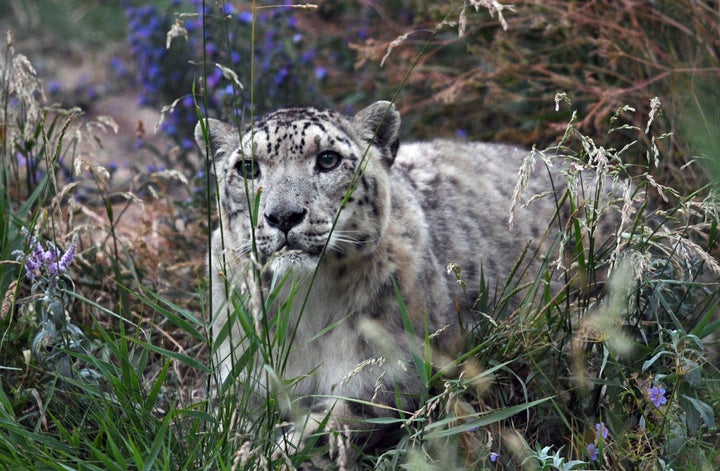
Just over 40 percent of people in Kyrgyzstan live below the poverty line, according to the World Bank, and almost three-quarters of the poor live in rural and mountainous areas. Agricultural workers are among the most vulnerable, meaning that environmental concerns often take a backseat to basic necessities. “People don’t think about pastures,” Urmat Omurbekov confirmed. “They only think about money.”
Two years ago, Omurbekov launched the pilot project with a festival in the village of Kuzart that encouraged herders to hit the road, repopulating the high-altitude pastures that once served as summer grasslands for nomadic herders. Called Baicalduu Koch (“good move” in Kyrgyz) the two-day event “taught the herders how to move like nomads,” he said. While costumed folk dancers spun and twirled, village elders, sporting traditional Kyrgyz white felted caps known as kalpak staged live demonstrations on the logistics of nomading.
“They showed us how to move from pasture to pasture,” said 60-year-old Nadyrbek Begaliev, a farmer from Cholpon. Villagers learned how to pack and transport yurts, guide horses over treacherous terrain, pray while slaughtering sheep and measure a blade of grass to know if it’s good for grazing. Among other pointers, he was taught that an upright crescent moon can forecast warm temperatures. “Our old men know everything from looking at the stars,” he said.
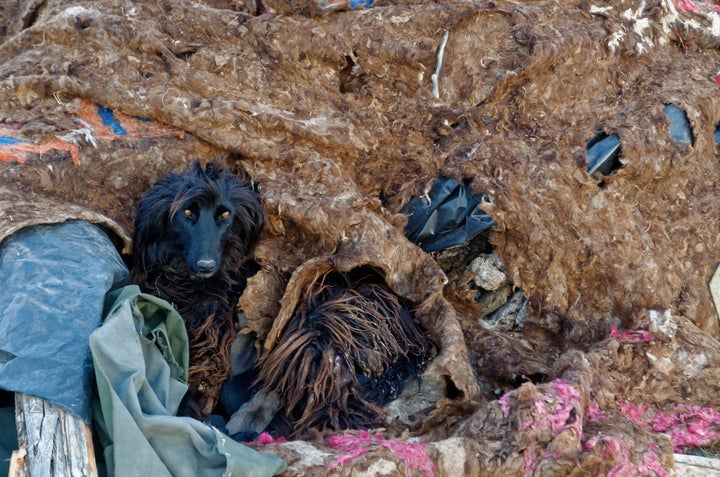
This summer’s move to Song Kol, initiated by the festival in Kuzart, is the culmination of this preparation. “This year, people are putting their lessons into practice,” said Omurbekov.
At the lake, the turquoise water reflected a crown of dun-colored peaks in the distance. Kachkynovna’s 50-year-old husband, Talant Egimbaev Asankanovich, was recounting the family’s perilous journey to the pasture with their 1,000 goats. “We went through three different high passes. There was snow, and it was difficult to cross.” But the couple’s four village-raised sons stuck it out. “Now we will change pastures every year.”
While the herders wind down their first season back in the high pastures, overgrazed village grasslands are showing signs of new growth. This summer in Kurzat village, a 74-acre plot of sparse, parched grass that was cordoned off three years ago has finally regrown thick tufts. Kyrgyzstan’s revitalization of traditional grazing methods joins a broader trend in recovered sustainability models that has spanned the globe, from Scandinavia to Peru.
Some say the successful effort highlights the vital need for bottom-up interventions in climate change adaptation efforts, ones that often begin with reconsidered attitudes toward the natural world.
“Our ancestors used to know very well how to graze in order to survive because all their lives were related to animals,” said Azamat Isakov, the director of the Central Asian NGO Camp Alatoo, which specializes in sustainable resource management. “We can see now that that’s the best strategy for climate change adaptation, the sustainable use of pastures.”
Outside his yurt, 46-year-old flock owner Tashtanbek Taalai Uulu slurped contemplatively from a bowl of kumis, or fermented mare’s milk, the Kyrgyz drink of choice. Under a chilly late August sun, horses and shaggy goats roamed the spongy, lunarlike surface of a vast grazing ground in scattered packs.
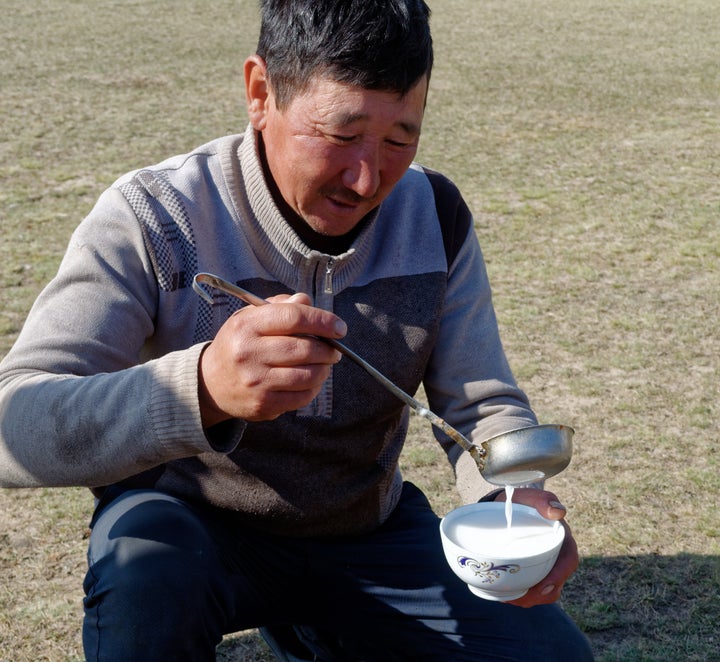
“In Soviet times there were rules. Now there are no rules,” Uulu said. Before going to Song Kol, he took his 300 sheep to roadside pastures in Kurzat, where suppliers from Bishkek would drive in to take cream back to the capital to sell — all within a comfortable radius from his home.
But as the climate grew drier, he decided to join the other herders in decamping to greener pastures. “If there’s no grass, it’s really bad for the Kyrgyz people,” he said. Some villagers have stayed put for now. As for Uulu, he has seen the virtue in mobility. “To move from pasture to pasture is better. That’s why it’s important to keep these traditions,” he said.
For more content and to be part of the “This New World” community, follow our Facebook page.
HuffPost’s “This New World” series is funded by Partners for a New Economy and the Kendeda Fund. All content is editorially independent, with no influence or input from the foundations. If you have an idea or tip for the editorial series, send an email to thisnewworld@huffpost.com.
